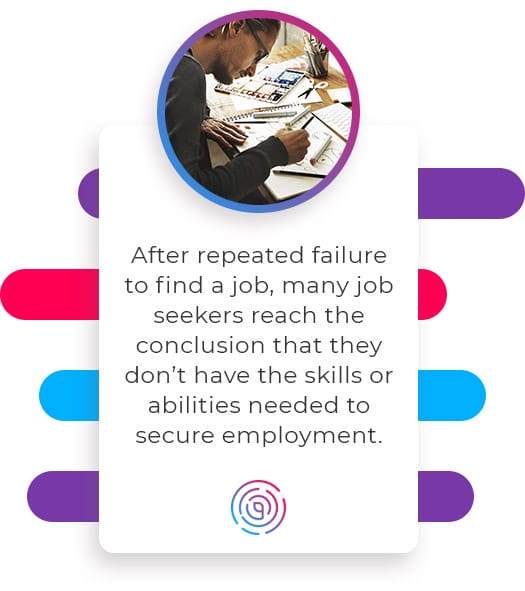Many of us know someone who is out of work and searching for a new career, especially now given the massive layoffs caused by the COVID-19 pandemic. But just how many Americans are currently unemployed? The answer largely depends on your definition of “unemployed.”
According to the U.S. Bureau of Labor Statistics, the headline unemployment rate for December stood at 6.7 percent — not bad considering where it was in April 2020. But there’s one glaring problem with this number: It doesn’t account for so-called “discouraged workers.”
What Are Discouraged Workers?
In economics, discouraged workers are people who want a job and are eligible for employment but who are currently unemployed and have given up looking for a job in the last four weeks — hence, why they’re called “discouraged.”
Discouraged workers have usually dropped out of the labor force because they couldn’t find a suitable job or failed to get a job when they applied. The term does not include people who have dropped out of the workforce because of other reasons, such as becoming pregnant or the inability to work due to being disabled.
When the U.S. Department of Labor (DOL) first began tracking discouraged workers in 1967, they reported 500,000 at the time. As of December 2020, there are 663,000 discouraged workers in the United States.
Why Do Workers Become Discouraged?
The reasons why workers become discouraged are varied and complex. Apart from the obvious frustration of not being able to secure employment, here are some common causes of worker discouragement:

- Prolonged Job Search: Oftentimes, discouraged workers have been seeking employment for months — perhaps even years. After repeated failure to find a job, many job seekers reach the conclusion that they don’t have the skills or abilities needed to secure employment.
- Lack of Education/Training: In a similar vein, some job seekers don’t think they have the educational credentials they need to get a job, which may discourage them from applying to jobs.
- Discrimination: Job seekers may face discrimination during the application and hiring process that ultimately discourages them from continuing their job search. Even employers who want to build a diverse workforce may inadvertently discriminate in the recruitment process.
How Discouraged Workers Affect the Labor Market
During recessions and economic downturns, the number of discouraged workers tends to increase as more workers become discouraged by a decreasing labor market. When the economy improves, discouraged worker numbers usually decrease as they return to the labor force.
When enough workers become discouraged, they can lower the labor force participation rate (LFPR), which is a key indicator of underlying problems in the job market. A reduced LFPR can negatively affect gross domestic product (GDP) growth because there are fewer workers available to achieve the desired output. When GDP growth slows down, it usually results in increased layoffs, reduced productivity, and fewer profits for companies.
Related: How to Measure Workforce Productivity
Proposed Solutions to Help Discouraged Workers
While policymakers play an important role in helping discouraged workers, employers and workforce development professionals can also do their part. Below, here are some commonly suggested solutions to reduce the number of discouraged workers:
- Use technology to overcome traditional employment barriers. Workforce development software can help stakeholders (employers, organizations, educational institutions, governments, etc.) connect job seekers with future employers, college scholarships, internships, apprenticeships, and other career-related opportunities.
LET TALLO POWER YOUR WORKFORCE INITIATIVE
- Implement training programs. Many discouraged workers currently lack the skills they need to secure employment. Policymakers could implement paid-for training programs that help workers acquire the skills they need to advance in their careers.
- Provide subsidies for employment opportunities. Subsidized employment programs are another potential strategy to help discouraged workers find employment. Although the effectiveness of such programs for long-term employment is hotly debated, these programs can provide temporary support during economic downturns and recessions.
- Foster a company culture of continuous learning. The United States is currently facing a growing skills gap. Employers can do their part by fostering a culture of continuous learning and encouraging employees to acquire new skills.

Participation Matters
Discouraged workers make up a small portion of the working-age population. Still, their lack of participation in the labor market can cause significant ripples in the economy. By taking measures to help discouraged workers secure long-term employment, we can all reap the benefits.
Image Credits
- Source: Rawpixel.com/Shutterstock
- Source: fizkes/Shutterstock







